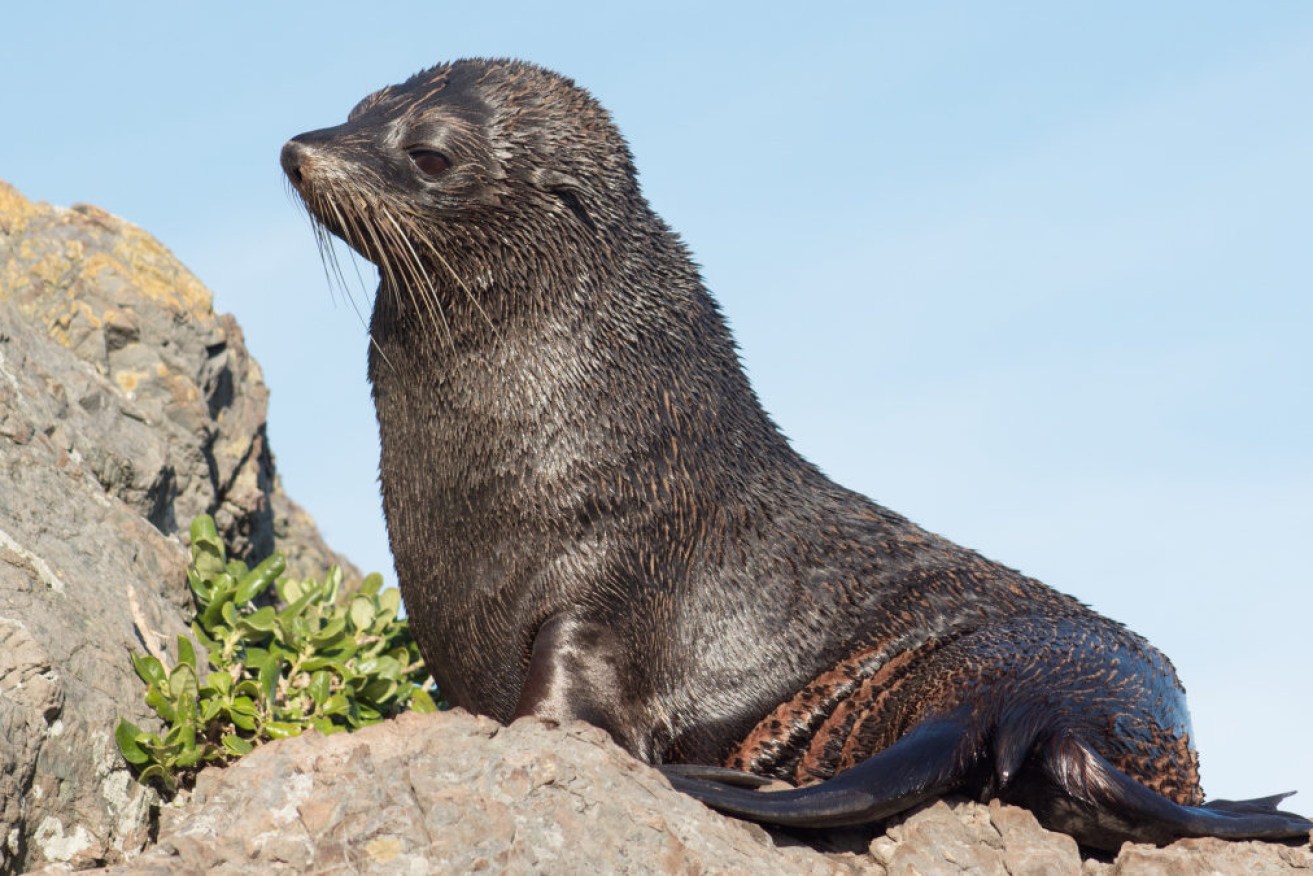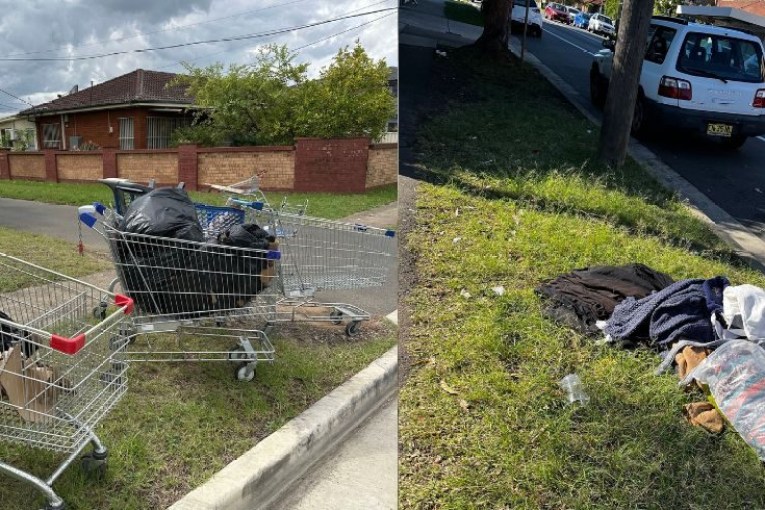War on seals: The ‘cruel measures’ used by Tasmania’s salmon farming industry


Long-nosed fur seals' fate at the hands of salmon farmers is particularly cruel. Photo: Getty
The profound and perverse environmental imbalance created in Tasmania by industrial salmon production, the ways in which ecosystems are flipped to their detriment by salmon farming, are no better exemplified than by the example of long-nosed fur seals.
Hunted to the point of near extinction in the 19th century, classified as a rare, threatened species in Tasmania and protected under state and federal law, the fur seals’ fate at the hands of salmon farmers is particularly cruel.
While in South Australia fines of up to $100,000 can be imposed for killing a long-nosed fur seal, in Tasmania what is termed the ‘management’ of fur seals by salmon companies long ago crossed over into programs of systematic cruelty.
Seals represent one more insoluble problem for the salmon industry as they damage nets (and get trapped inside them), kill salmon, and interfere with divers. Yet offering a permanent food source, the floating feedlots that proliferate along the south-east Tasmanian coast are attracting fur seals in ever-growing numbers – in areas where they have not been known in living memory. The industry’s war against the seals is never-ending: all that changes are the weapons used as one scandal begets another.
When the salmon farmers were found to be shooting and killing seals on a large scale, dumping their rotting bodies on local tips, the industry resorted to trapping and relocating the animals to north-west Tasmania. By 2017 over two thousand seals a year were being trapped, sedated and transported for several hours. There, the creatures established colonies that in turn became a major problem for local commercial fishermen. One, Craig Garland, in a submission to the Fin Fish Inquiry run by the Tasmanian government in 2019, claimed that the seals were rendering the fisheries of the north-west small-mesh fishermen uneconomical and “resulting in mental health issues for those fishermen”.
The practice so incensed Garland that he ran for federal parliament on an anti-salmon industry platform in the critical 2018 Braddon by-election. In spite of spending no money on his campaign Garland still garnered 11 per cent of the vote, his preferences delivering the seat to the ALP candidate in what had been expected to be a Liberal Party victory.
As always with the salmon industry, many details of the trapping program are secret. A recent Right to Information request by Environment Tasmania revealed that in 2016 Tassal came under criminal investigation for animal cruelty after wildlife rangers found twenty seals in a pen at a Tassal lease and it was subsequently discovered the seals might have been there for several days without food or haul-out space.
Yet instead of pursuing prosecution, the Tasmanian government quickly acted to cover up the scandal. Tassal was retrospectively granted an extension to the time it could keep the twenty seals captive – from six hours to seven days. All charges were dropped and a Marine Farming Branch bureaucrat advised Tassal on how to spin the story to the media, should it become public.
In recent years the salmon industry has hit upon seal deterrents more suggestive of suppressing a civil uprising than responsible environmental management. One of its method is to fire ‘blunt darts’ at the animals, another is to shoot them with what the international industry trade publication Salmon Business identified as riot guns, using beanbag rounds – a cloth sock enclosing 40 grams of lead pellets fired from 12-gauge shotguns. According to Right to Information documents, in 2016 alone 3770 beanbag rounds were used.

Richard Flanagan investigates Tasmania’s salmon farming industry in ‘Toxic’. Photo: Getty
Though described as non-lethal, such ammunition has been associated with deaths and severe injuries to humans in the US, Hong Kong and Europe. As well as poisoning the marine environment with 150 kilograms of lead every year, in 2018, according to an ABC report, “two industry insiders who work in aquaculture in Tasmania … independently claimed that on a number of occasions they had personally witnessed beanbag rounds blinding seals and hitting them in the head at close range”.
In the view of Malcolm Caulfield, founder and principal lawyer of the Animal Welfare Community Legal Centre Tasmania, “What we are seeing is an industrial-scale use of cruel measures against a protected species in Tasmanian waters.
“What it clearly highlights to me is that the Government isn’t doing its job. The fact of the matter is this is an unacceptable use of these very violent tactics against these marine mammals which have a high level of protected status under the law.”
All of this is ignored by Tasmanian politicians and regulators. The war simply goes on. The state government – which once paid Tasmanians to hunt the thylacine to extinction – continues to permit the trapping and sedation of seals, while allowing their killing as ‘a management option of last resort’.
Tassal is reportedly now trialling a new deterrent, again borrowed from riot control, that of water cannons, which it describes as spraying seals with a ‘low-pressure, high flow’ water stream.
“This is still a noxious deterrent that has potential to injure seals,” the RSPCA’s chief executive Dr Andrew Byrne has been quoted as saying. “The RSPCA would prefer investigating options that may encourage the seals to move away from pens or the holy grail of seal safety, better pen designs.”
Like so many unfixed, unresolved and ultimately unresolvable problems with salmon farming, the Tasmanian salmon industry has been talking about seal-proofing nets for almost as long as there has been a Tasmanian salmon industry. The companies do invest significantly in improving their net technology because loss of stock represents loss of profit, but a failsafe design remains elusive and the war between Big Salmon and the marine environment continues to escalate.
In that war, the most common weapon used against seals is the innocuously named ‘seal cracker’. In the US it is more accurately called a seal bomb and is classified as a ‘high explosive’ by the U.S. Bureau of Alcohol, Tobacco, Firearms, and Explosives. Either lit and thrown into the water, or set up as booby-trapped underwater devices, seal bombs ‘have been shown to shatter bones of marine mammals and to kill fish within the blast vicinity’. In one instance, a seal bomb killed a human swimmer. The victim was found to have “ruptured both eardrums, herniated brain tissue through ruptured areas in the cribriform plates, fractured cranial bones including the wings of the sphenoid and the left petrosal, and caused a 1.5 centimetre deep wound above the scapula”.
In 2016 the Tasmanian salmon industry used 39,024 seal bombs, and yet no research has been conducted on their actual physical impact on fur seals, nor is there any consideration given or science being undertaken on their consequences on the surrounding marine environment, though it may be grave. Dead seals are often found washed up near Tasmanian salmon farms.
This is an edited extract from Toxic by Richard Flanagan. $24.99. Copyright 2021. Available from all book retailers now.








